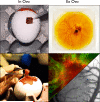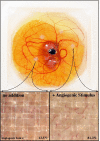The chick embryo as an expanding experimental model for cancer and cardiovascular research
- PMID: 24357262
- PMCID: PMC4164046
- DOI: 10.1002/dvdy.24093
The chick embryo as an expanding experimental model for cancer and cardiovascular research
Abstract
A long and productive history in biomedical research defines the chick as a model for human biology. Fundamental discoveries, including the description of directional circulation propelled by the heart and the link between oncogenes and the formation of cancer, indicate its utility in cardiac biology and cancer. Despite the more recent arrival of several vertebrate and invertebrate animal models during the last century, the chick embryo remains a commonly used model for vertebrate biology and provides a tractable biological template. With new molecular and genetic tools applied to the avian genome, the chick embryo is accelerating the discovery of normal development and elusive disease processes. Moreover, progress in imaging and chick culture technologies is advancing real-time visualization of dynamic biological events, such as tissue morphogenesis, angiogenesis, and cancer metastasis. A rich background of information, coupled with new technologies and relative ease of maintenance, suggest an expanding utility for the chick embryo in cardiac biology and cancer research.
Keywords: cancer metastasis; cardiac development; cell motility; chick CAM; chick model history; chicken embryo; in vivo imaging.
Copyright © 2013 Wiley Periodicals, Inc.
Figures



References
-
- Al Naieb S, Happel CM, Yelbuz TM. A detailed atlas of chick heart development in vivo. Ann Anat. 2013;195:324–341. - PubMed
-
- Arpaia E, Blaser H, Quintela-Fandino M, Duncan G, Leong HS, Ablack A, Nambiar SC, Lind EF, Silvester J, Fleming CK, Rufini A, Tusche MW, Brustle A, Ohashi PS, Lewis JD, Mak TW. The interaction between caveolin-1 and Rho-GTPases promotes metastasis by controlling the expression of alpha5-integrin and the activation of Src, Ras and Erk. Oncogene. 2012;31:884–896. - PMC - PubMed
-
- Auerbach R, Kubai L, Knighton D, Folkman J. A simple procedure for the long-term cultivation of chicken embryos. Dev Biol. 1974;41:391–394. - PubMed
-
- Barnett JV, Desgrosellier JS. Early events in valvulogenesis: a signaling perspective. Birth Defects Res C Embryo Today. 2003;69:58–72. - PubMed
Publication types
MeSH terms
Grants and funding
LinkOut - more resources
Full Text Sources
Other Literature Sources

